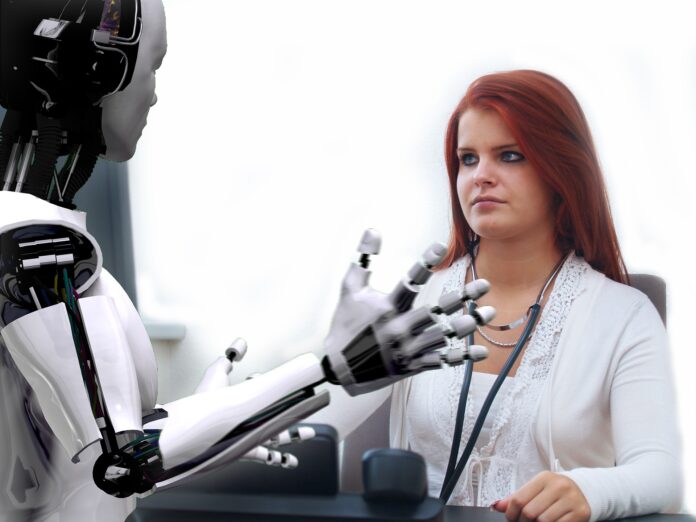Robotic surgery has been gaining popularity in recent years due to the numerous benefits it offers. While there are many advantages to using robotics in surgical procedures, there are also some limitations that must be taken into account. In this article, we will explore both the benefits and limitations of using robotics in surgery.
Precision and Accuracy: A Major Advantage of Robotics in Surgery
One of the most significant advantages of robotic surgery is the precision and accuracy it offers. The use of robotics allows surgeons to perform highly intricate procedures with increased accuracy, making it an ideal tool for surgeries that require extreme precision. This is because robotic arms have a greater range of motion and can operate in tight spaces, making it possible to access areas that would be difficult or impossible to reach with traditional surgical instruments.
Minimal Invasive Surgery: A Game-Changer in Medical Procedures
Another significant advantage of robotic surgery is the ability to perform minimally invasive procedures. Traditional surgeries often involve large incisions, which can cause significant pain and scarring. Robotic surgery, on the other hand, uses small incisions that result in less pain, less scarring, and a faster recovery time.
Faster Recovery Time: Getting Back to Life Quicker
Robotic surgery also offers a faster recovery time for patients. Because the incisions are smaller, the body can heal more quickly, and patients can return to their normal activities faster than with traditional surgery.
Reduced Pain and Scarring: Cosmetic Benefits of Robotic Surgery
In addition to faster recovery times, robotic surgery also offers cosmetic benefits. Because the incisions are smaller, there is less scarring, and the wounds heal more quickly. Patients also experience less pain after surgery, which can improve their overall experience and make the recovery process more manageable.
Improved Visualization and Dexterity: The Perks of Robotic Surgery
Robotic surgery also offers improved visualization and dexterity. Robotic cameras can provide a much clearer view of the surgical area, allowing surgeons to see more clearly and make more accurate decisions. Additionally, robotic instruments are highly dexterous and can manipulate tissues and organs with greater precision than traditional surgical instruments.
However, along with its numerous benefits, there are some limitations to using robotics in surgical procedures.
High Cost: Is the Investment Worth It?
One of the biggest limitations of robotic surgery is its high cost. Robotic systems are expensive to purchase, and the maintenance and repair costs can also be high. This can make it difficult for smaller hospitals and clinics to invest in this technology.
Technical Failures: The Potential for Disaster
Another limitation of robotic surgery is the potential for technical failures. Robotic systems are complex, and if a malfunction occurs during surgery, it can lead to disastrous consequences. While the likelihood of such an event is low, it is still a significant concern.
Lack of Tactile Feedback: The Need for Human Touch
One of the key limitations of robotic surgery is the lack of tactile feedback. Because the surgeon is not physically touching the tissues and organs, they may not be able to detect certain nuances or variations in the tissues. This can make it difficult to make accurate decisions during the surgery.
Dependence on Technology: Are We Putting Too Much Faith in Machines?
Another concern with robotic surgery is the dependence on technology. While robotic systems are highly advanced, they are still machines and can fail. Surgeons must be prepared to perform the surgery without the assistance of robotics in the event of failure.
Limited Access: Not Every Patient is Suitable for Robotic Surgery
Finally, there are some limitations in terms of patient selection. Not every patient is suitable for robotic surgery, and some procedures may require traditional surgery instead. Additionally, patients with certain medical conditions may not be suitable candidates for robotic surgery.
Conclusion
In conclusion, robotics in surgical procedures has revolutionized the field of medicine by offering numerous benefits, including increased precision and accuracy, minimally invasive surgery, faster recovery time, reduced pain and scarring, and improved visualization and dexterity. However, there are also some limitations, such as the high cost, potential for technical failures, lack of tactile feedback, dependence on technology, and limited patient selection.
Despite these limitations, the benefits of robotic surgery continue to outweigh the risks in many cases, and the use of this technology is likely to continue growing in the future. As medical professionals continue to evaluate the benefits and limitations of using robotics in surgical procedures, it is important to take into account the potential risks and limitations while also considering the potential for improved patient outcomes and advancements in the field of medicine. By carefully considering the use of robotics in each individual case, medical professionals can ensure that patients receive the best possible care and outcomes.
And as always folks be sure to check out the Global Growth Forum and some of the latest articles that are both informative and interesting. Also, check out the Mojo Patrakar and read some of the latest articles in Hindi.









